Are QR codes still relevant?
QR codes have been around for years, and as long as they’ve been around, marketers have debated whether they are the next big thing or close to extinction — even HubSpot has debated the longevity of the technology.
But here we are again, witnessing the apparent resurgence of the humble QR code.
As businesses figure out how to make their daily operations as safe and contactless as possible, QR codes have revealed themselves as the solution that was right in front of us the whole time.
In this post, we’ll discuss what a QR code is and how to generate one for your brand. We’ll also provide examples of small businesses that are using QR codes to improve their customers’ experiences during COVID-19.
Create QR Codes in Minutes
What is a QR code?
Quick Response (QR) codes are essentially squares with black and white symbols. Each QR code is unique and can hold encrypted information — such as a website link, product landing page, promotional details, a coupon, or other information. When someone scans this code using a smart device, the code quickly reveals the encrypted information. Think of it as a tool that works similarly to a barcode — but with the ability to hold more and different types of data.
Here’s an example of what a QR code looks like:
Most anyone with a smartphone can read QR codes with minimal to no setup. Older smartphones may require users to install an app on their device to scan QR codes. However, most smartphones today come with the technology built in.
For example, iPhone users can simply use their camera to hover over a QR code, and a notification will pop up that takes them to the correct web page or information.
How do I create a QR code?
There are several QR code generators available. Many of these options are free. Look for QR code generators that allow you to design a unique code for your company. Some will even let you display your logo on the QR code. One of the most common is the QR Code Generator. However, it’s not the only option, so look around for a generator that you like before registering an account and creating yours.
Once you’ve selected a QR code generator, determine the type of information you want to share. The generator will give you the option to select from various content types — like email, MP3, SMS, Facebook, text, etc. Let’s say, for example, that you want the QR to direct someone to a specific product page. You’d select “URL” as the content type and add your link to the form that appears.
The generator will also give you the option to have either a static or dynamic code. Dynamic codes let you change the information once you’ve created the QR code, whereas you can’t alter static codes.
Dynamic codes come in handy when you need to edit the details after the generator has created your code and you’ve distributed it. For example, if you’re promoting an event and the start time changes, you can simply revise that information in the QR code. You won’t have to make a new one from scratch and worry about customers potentially having the wrong information from the original QR code you distributed.
Once you’ve promoted and distributed your QR code, be sure to check the analytics. Monitor the amount of traffic from each QR code so you can see how they are performing and make adjustments as needed.
3 use cases for small businesses
As a result of COVID-19, customers expect businesses to provide contactless interactions. And businesses across the country are looking for ways to limit contact for customers in their day-to-day operations.
QR codes have now become a way to creatively address customer concerns. While QR codes are great for marketing purposes, they also show your customers that you care about their safety and are actively seeking ways to incorporate touch-free interactions.
Here are some examples of small businesses that have used QR codes to enhance the customer experience during COVID-19.
Contactless restaurant menus and ordering
Create an online form — like this pizza order form — and a QR code to display your full menu. Then, post a sign outside the restaurant and in relevant marketing assets encouraging potential customers to scan the QR code and see the menu directly from their phones.
Before even entering the restaurant, the potential diner can make decisions and assessments about the place. They can preview the menu, determine if they’d like to eat there, and be reassured that the restaurant is taking safety precautions.
PayPal’s touch-free payment
Before the pandemic hit, mobile wallets were already gaining traction. Companies like Apple, Google, and Samsung all had their own versions. Mobile wallets add an extra layer of protection for shoppers by tokenizing their payment details. This way, if hackers attack an establishment’s system, the actual credit card number is never exposed.
Taking mobile wallets a step further, PayPal recently introduced QR codes for touch-free payments. With this added feature, small business owners create a PayPal-generated QR code that customers scan to send payment. PayPal suggests adding these QR codes to product packaging, store windows, and point of sale areas.
An enhanced customer experience
QR codes aren’t just for ordering food or providing contactless payments. They’re also useful for entertainment.
For example, the Darling in West Loop is using QR codes to deliver an experience. Diners who order takeout can scan the QR code on the back of the menu to watch a livestream cabaret performance at the restaurant. Another QR code affixed to the menu lets the audience view looped footage from the bar and an hour-long DJ set.
The to-go package includes more than just a QR code-enabled performance. It also has fresh flowers, a mini-projector, and champagne flutes. The entire package is a brilliant way one small business figured out how to give their patrons the restaurant experience from the comfort of home.
Unfortunately, the need for contactless shopping won’t be going away anytime soon. This is why businesses must learn to be flexible and creative when using contactless technology like QR codes. Think beyond just adding a link to your website and consider how you can create a unique experience that keeps your customers coming back for more.




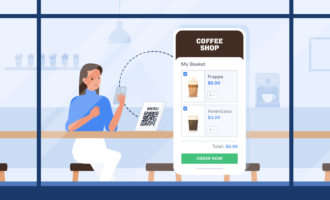




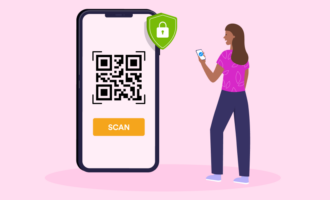







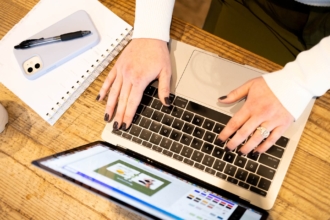




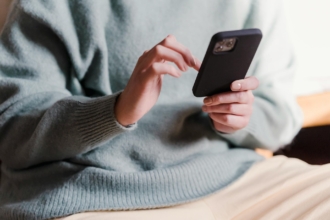

















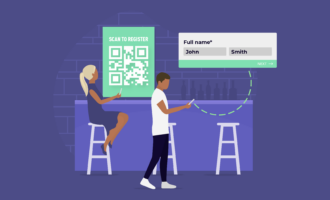



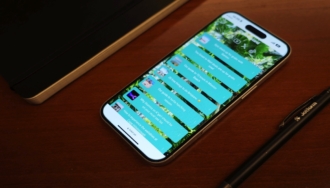




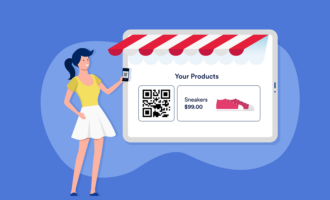








Send Comment: